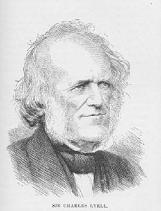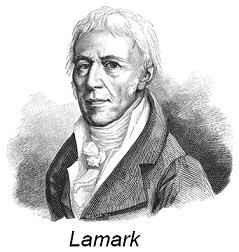
Darwin didn’t ‘discover evolution’. Evolutionary ideas had been proposed and debated long before Darwin came along. Darwin proposed the mechanism which brought about evolutionary change – natural selection. But what were these early ideas about evolution and how were they different from Darwin’s view of life?
The Static Universe
The origins of the Earth, life and humanity have perplexed thinkers for thousands of years. Primitive societies were content to assume supernatural causes. It seemed reasonable to accept that the world we see today and everything it, especially the marvellous complexity of living organisms, had been created by a benevolent deity. This world view was essentially static. It reached its most developed form when Linnaeus began to classify animals and plants hierarchically in the 18th century. For example, cats and lions are in the Family Felidae, can be grouped with dogs in the Order Carnivora, and with humans in the Class Mammalia. Linnaeus believed that a logical creator had created an ordered world, which could be understood. Linnaeus’ work was crucial, as the structured relationship that he saw as evidence of God’s plan was reinterpreted by Darwin as evidence of different degrees of shared ancestry.
The Changing Earth And Geological Controversies
Linnaeus’ classification system was typical of the time as scientists began to study the world more thoroughly. The first steps toward an evolutionary view of the Earth were taken in geology, as geologists began to unravel the process by which rocks are formed. They could see that some rocks have a layered structure. These sedimentary rocks were clearly formed from layers of material such as sand or mud, which had somehow solidified from time and pressure. This implied that the Earth had changed over time, with sea sometimes giving way to land. The implication was that the present state of the earth is very old.

In the 19th century debates over what this meant, and how the earth changed, were partly religiously inspired. The catastrophists argued that geological events in the past must have been far more intense than today. In order to raise a mountain range, earthquakes must have been literally catastrophic. Likewise, great canyons must have been created by enormous, perhaps Biblical, floods. They believed that since its creation, the Earth had gone through distinct phases, separated by these catastrophes. In contrast, Charles Lyell championed uniformitarianism, the idea that one should only use processes observable today to explain the past. With sufficient time, any change is possible. However, he also insisted that the Earth was a steady-state system, without a beginning or an end. Both theories were important: the uniformitarians were correct to demand a great length of time and to remove the supernatural as an explanation. On the other hand, the catastrophists were correct when they argued for a progression in geological history and that the Earth had a beginning.
Fossils And Extinction
The catastrophists were partly inspired by the new research into fossils. By the mid 19th century, vast quantities of fossilised organisms had been discovered. Interestingly, most of them had gone extinct. This was initially controversial, as it implied that God had allowed some of his creations to be utterly destroyed. Some geologists hoped that explorers would discover living dinosaurs, mammoths, etc, but this became less and less likely with each passing year. Instead, the catastrophist geologists argued for a series of creations followed by catastrophic extinctions, all divinely planned. As the Earth’s surface changed, new species were created that were appropriately adapted. The dinosaurs, perhaps, were one such experiment. This seemed plausible, as a particular fossil species would only be found in a particular thickness of rock. The incompleteness of the fossil record meant that new species seemed to appear abruptly.
Laws Of Creation
The alternative to the continuous creation model was transmutation, the idea that one species changed into another. This was revolutionary, as scientists since Aristotle had believed in the absolute fixity of species. However, the idea became more popular over time as more fossils were discovered, filling in some of the gaps. Instead of God rushing about creating new species when necessary, some scientists argued that it would be more elegant if there were a divine ‘law of development’ that manifested by turning one species into another. Robert Chambers popularised this view in his 1844 book Vestiges of the Natural History of Creation.
Chambers argued that organisms have an inbuilt progressive tendency. In his view, life began as a number of primitive forms, which have been gradually becoming more advanced. This meant that mammals for example, are unrelated but represent a number of progressions to the mammal stage from different beginnings. This is incorrect, but Chambers did succeed in making the transformation or evolution of species more acceptable. Even more radically, he proposed that humans were simply the most advanced progression of life, rather than a separate special creation.
Lamarck
The main problem with early ideas on transmutation was that no one had proposed a satisfactory mechanism, one that worked according to the known physical laws. The only man who tried was Jean de Monet, better known as Lamarck. In 1809 he had published his theory, which argued that there was an ‘active fluid’, which acted on matter to spontaneously and continuously create the most primitive organisms, such as flatworms. These organisms would then change during their life as they adapted to their ecological roles.

Finally and crucially, they would then pass on these acquired characteristics to their offspring. For example, the primitive giraffe would stretch its neck as it attempted to reach higher leaves. Its offspring would be born with longer necks, eventually giving the animal of today. This purely materialist theory left no room for supernatural causes. Lamarck’s theory was thus shunned. In addition, he had proposed it when biologists were still convinced that species did not change. The inheritance of acquired characteristics was neglected until Darwin convinced most scientists that evolution did happen. It then re-emerged as an alternative to natural selection, before being refuted.
Before Darwin
So, by the middle of the 19th century, some considerable progress had been made. There was general acceptance that the Earth was extremely old and had changed over time, with land giving way to sea and the reverse. The climate had also changed, for example, the coal deposits indicated that much of the world had once been swampy. In the past there had been many different species that were no longer found today. Many scientists, encouraged by the fossil record, were willing to accept that one species might become another. All that was needed was a mechanism.
Written by Joe Walmswell
References & Further Reading
Evolution: The History of an Idea
by Peter Bowler, University of California Press: 1983
The Evolution of Darwinism
by Timothy Shanahan, CUP: 2004